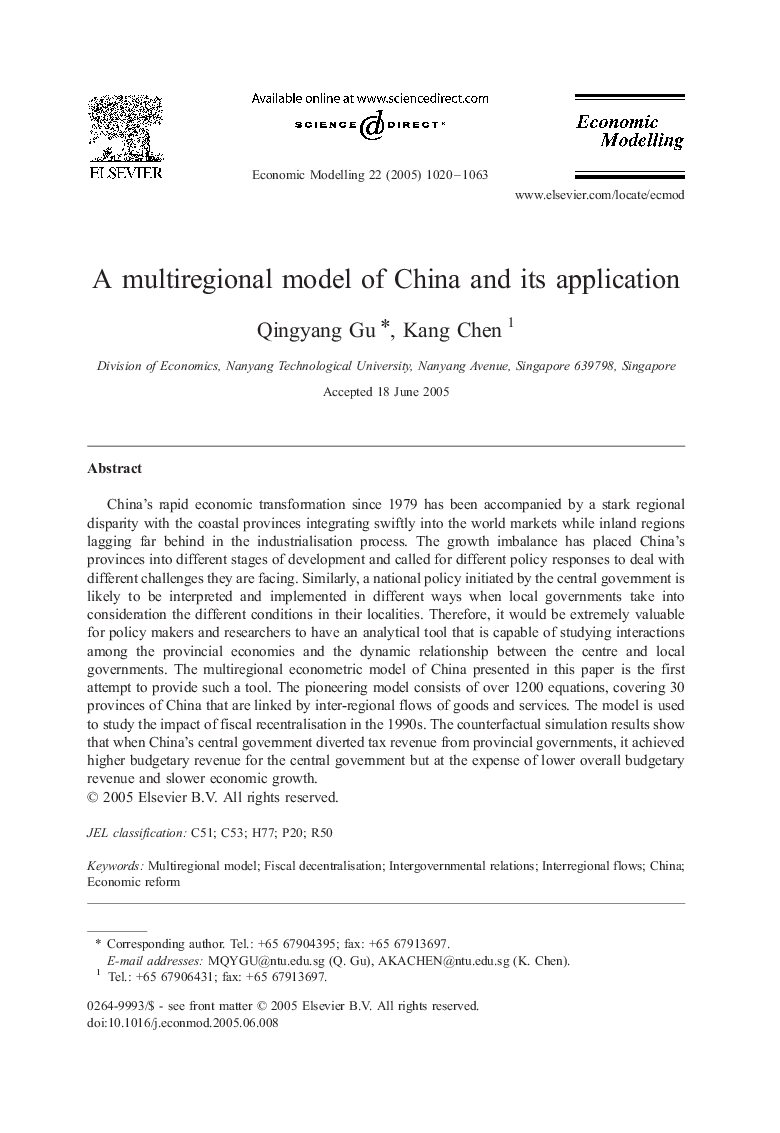| Article ID | Journal | Published Year | Pages | File Type |
|---|---|---|---|---|
| 9548826 | Economic Modelling | 2005 | 44 Pages |
Abstract
China's rapid economic transformation since 1979 has been accompanied by a stark regional disparity with the coastal provinces integrating swiftly into the world markets while inland regions lagging far behind in the industrialisation process. The growth imbalance has placed China's provinces into different stages of development and called for different policy responses to deal with different challenges they are facing. Similarly, a national policy initiated by the central government is likely to be interpreted and implemented in different ways when local governments take into consideration the different conditions in their localities. Therefore, it would be extremely valuable for policy makers and researchers to have an analytical tool that is capable of studying interactions among the provincial economies and the dynamic relationship between the centre and local governments. The multiregional econometric model of China presented in this paper is the first attempt to provide such a tool. The pioneering model consists of over 1200 equations, covering 30 provinces of China that are linked by inter-regional flows of goods and services. The model is used to study the impact of fiscal recentralisation in the 1990s. The counterfactual simulation results show that when China's central government diverted tax revenue from provincial governments, it achieved higher budgetary revenue for the central government but at the expense of lower overall budgetary revenue and slower economic growth.
Related Topics
Social Sciences and Humanities
Economics, Econometrics and Finance
Economics and Econometrics
Authors
Qingyang Gu, Kang Chen,
